At the conclusion of the 3rd Shenyang Faku International Flight Convention and 2014 Shenyang Airshow, Karl Drage and Pete Wells (of Twister Aerobatics) headed to Beijing for a few days and found time to visit the Beijing Air and Space Museum (referred to in many places online as Beijing Aviation Museum) located at Beihang University.

© Karl Drage – www.globalaviationresource.com
After a morning spent wandering around Beijing’s vast Forbidden City, we arrived at Beihang University around 1400 on the afternoon of Saturday, 6 September. I’ll be honest, without our guide and host, Carol, I’m not entirely sure we would have been granted access. You see, Beijing Air and Space Museum is part of a working university (previously known as Beijing University of Aeronautics and Astronautics), and, it was relayed to us, only students of the facility should have been present at the time. Once Carol explained to the lady on the door who we (more specifically Pete!) were and why we were there, she thankfully allowed us in once the nominal entrance fee (less than £1) had been paid.
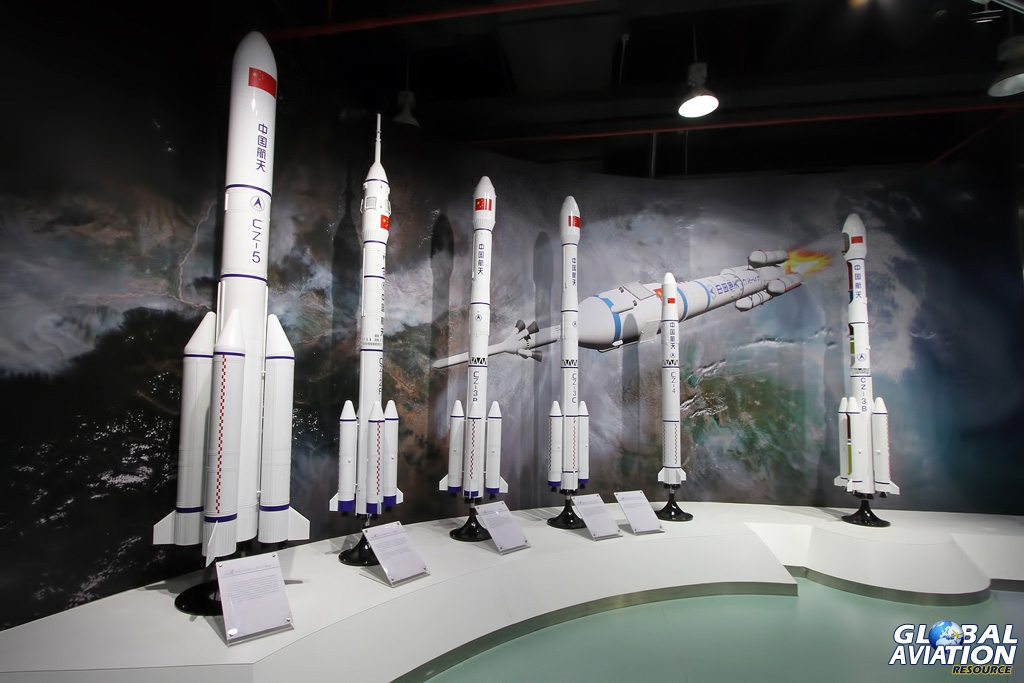
© Karl Drage – www.globalaviationresource.com
With significant focus on high-level technological and scientific research, the university is considered to be one of China’s best engineering schools and is highly influential to both the nation’s aeronautical and space industries.
Prior to the latter stages of 2012, the museum’s aircraft collection had been kept outdoors. With very high temperatures in the summer and extremely cold temperatures in the winter, along with the associated precipitation, it was obviously desirable to bring the collection inside.
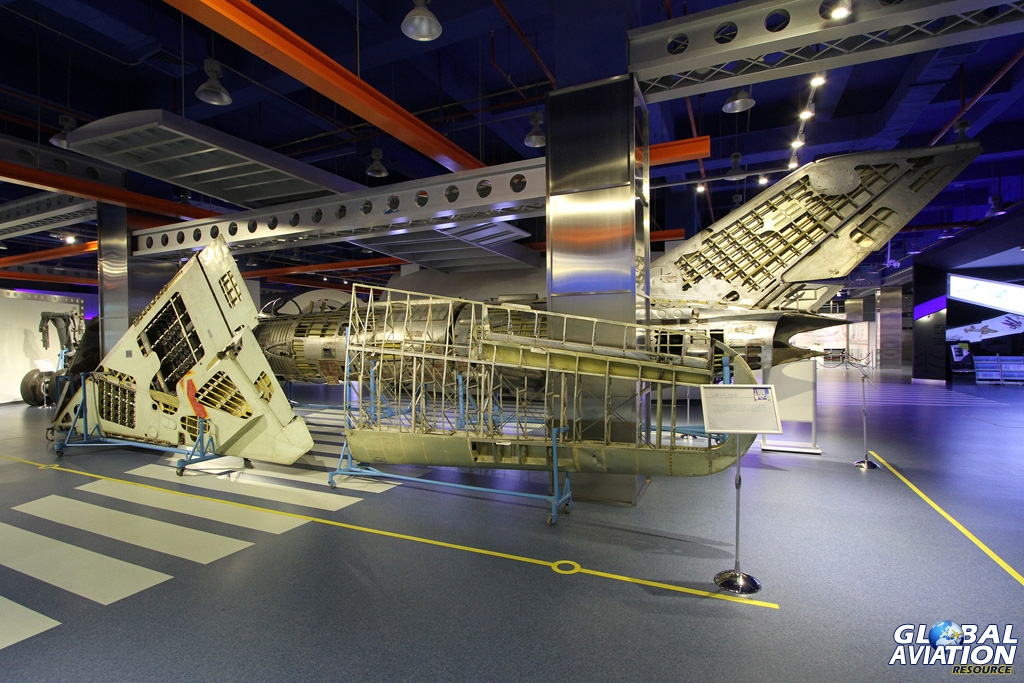
© Karl Drage – www.globalaviationresource.com
And what a collection it is too. On entry, visitors are first presented with a number of aircraft parts preserved with the students in mind. There are several wings and even an entire fuselage (a Dongfeng 102, I believe – a failed predecessor of the Shenyang J-6) stripped of panels and covers to reveal the skeletal construction inside. Collections of undercarriage legs, and even a fully-retractable set of main bogies from a B-25, are accompanied by a number of ejector seats and other components. For an engineer like Pete, it was fascinating to see.
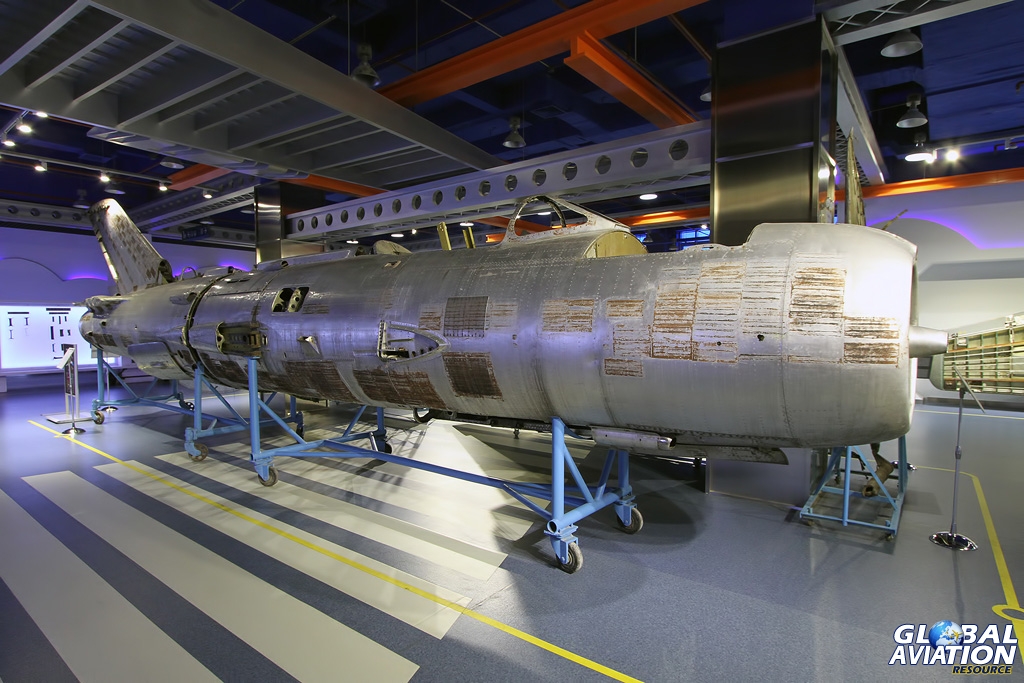
© Karl Drage – www.globalaviationresource.com
Turning the corner, you were brought to the main aircraft hall, where the first aeroplane to catch most people’s eye will be the intriguing looking Northrop P-61 Black Widow. The twin-engine, twin-boom layout type was conceived as a night fighter aircraft, becoming the first such operational type in the US inventory when it entered service in 1944. Of 706 built, just four survive (though it is said that there are two further examples in China which have previously been offered for sale), so Beihang’s P-61B variant, 42-39715, is as historically significant as it is interesting to look at.

© Karl Drage – www.globalaviationresource.com
Unfortunately, as is often the case with museum collections, space is at something of a premium, and the P-61 is rather hemmed in, making it impossible to get an unobstructed shot of the whole airframe.
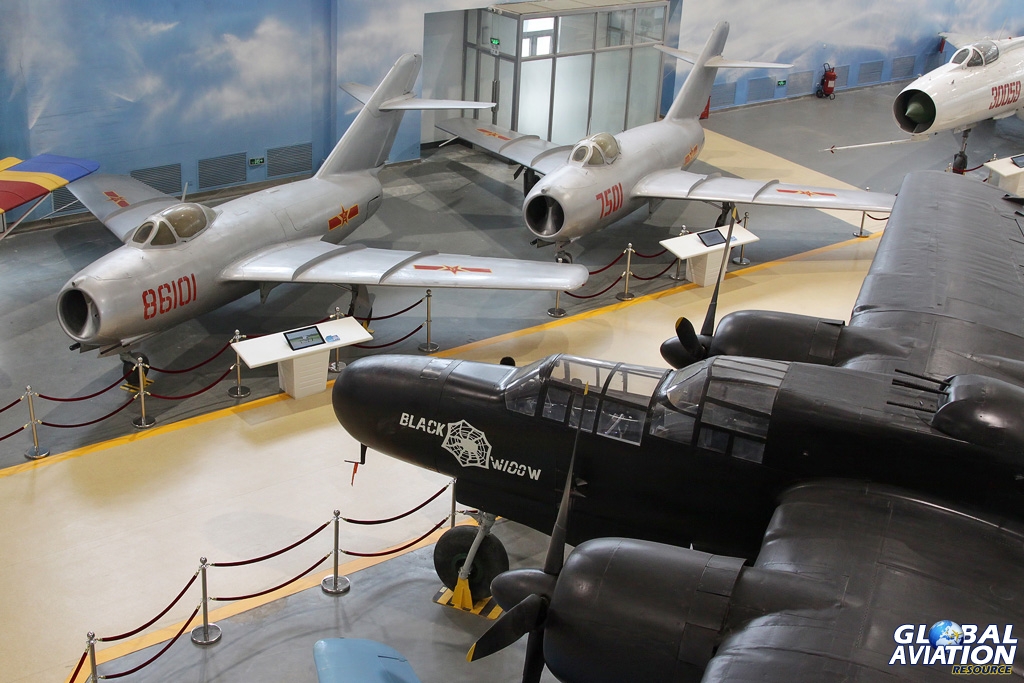
© Karl Drage – www.globalaviationresource.com
The P-61 is not the only aircraft of American origin on display. A North American AT-6D Texan, reported to be ‘7506’, is on display in US markings with various panels removed and bearing just the code ‘04’. On the opposite side of the hall lies a Republic P-47N Thunderbolt which is said to be construction number 499-6808. To date, no-one appears to be able to identify this aircraft or offer any suggestions as to its service life. Interestingly, it carries the black and white chequer board markings of Duxford’s 78th Fighter Group.

North American AT-6D Texan © Karl Drage – www.globalaviationresource.com
The Russian influence on Chinese aviation is very obvious, starting with a green Polikarpov Po-2 utility biplane. World War Two types on display include the Ilyushin Il-10 “Beast” and Tupolev Tu-2 “Bat”, while the Lavochkin La-11 and Yakovlev Yak-11 represent other propeller driven aircraft of the period immediately after the cessation of hostilities.

Yak-11 © Karl Drage – www.globalaviationresource.com
The Il-10 is displayed minus the outboard portion of its wings and with a number of other panels removed.
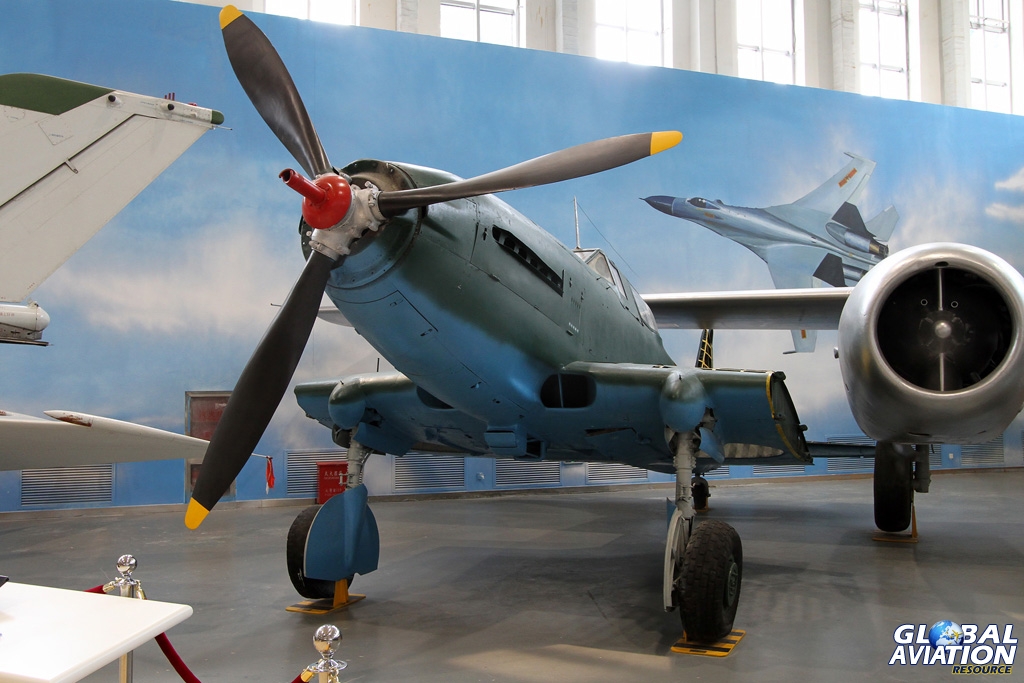
© Karl Drage – www.globalaviationresource.com
Another aircraft from that era can be found taking up considerable floor space. Its all over grey colour scheme, together with the fact I can find only rather vague references to it in any online searches, make it rather difficult to identify, but, suffice it to say, I’m pretty sure it’s a US-built Douglas C-47 Skytrain as opposed to being a license-built version thereof, namely the Lisunov Li-2.
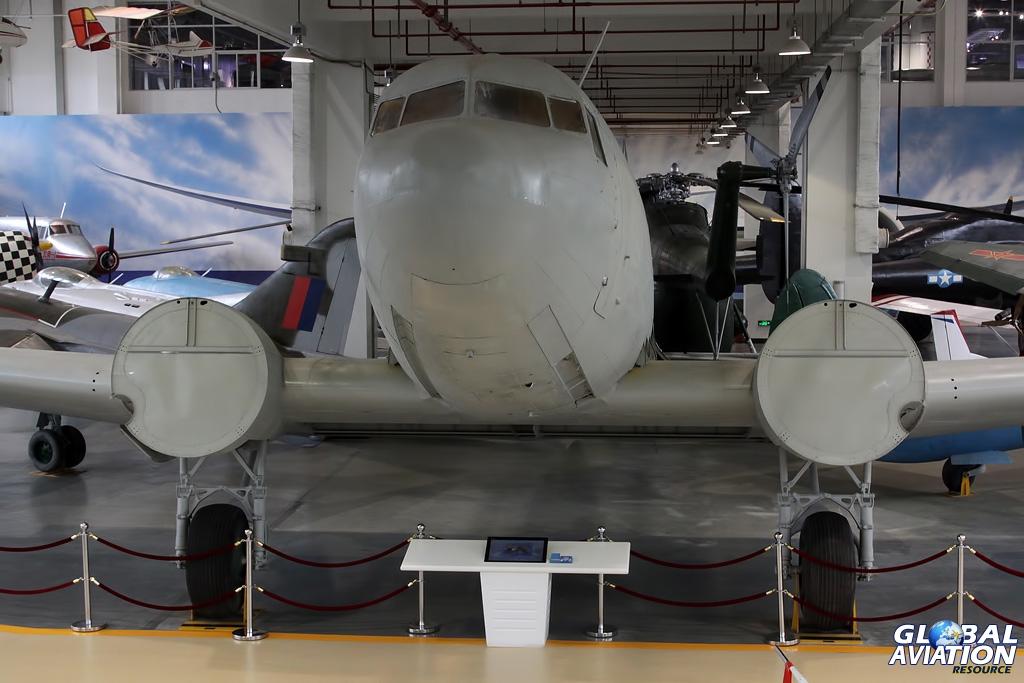
© Karl Drage – www.globalaviationresource.com
Of a similar size and targeted at similar roles is the Ilyushin Il-14P “Crate”, 666, preserved in CAAC colours, again minus the outboard sections of wing. The Il-14 first flew in October 1950 and served 30 different military operators and in a number of civilian hands too.

© Karl Drage – www.globalaviationresource.com
Much smaller in size is the Benez-Mraz M-1C Sokol, a single-engine prop driven utility aircraft hailing from Czechoslovakia in the immediate aftermath of World War Two. Intriguingly, I can find no reference to the Chinese military having ever operated the type, but since the example here carries PLAAF (People’s Liberation Army Air Force) markings – and a further airframe is on display at Datangshan – it seems only logical to assume that this was indeed the case.
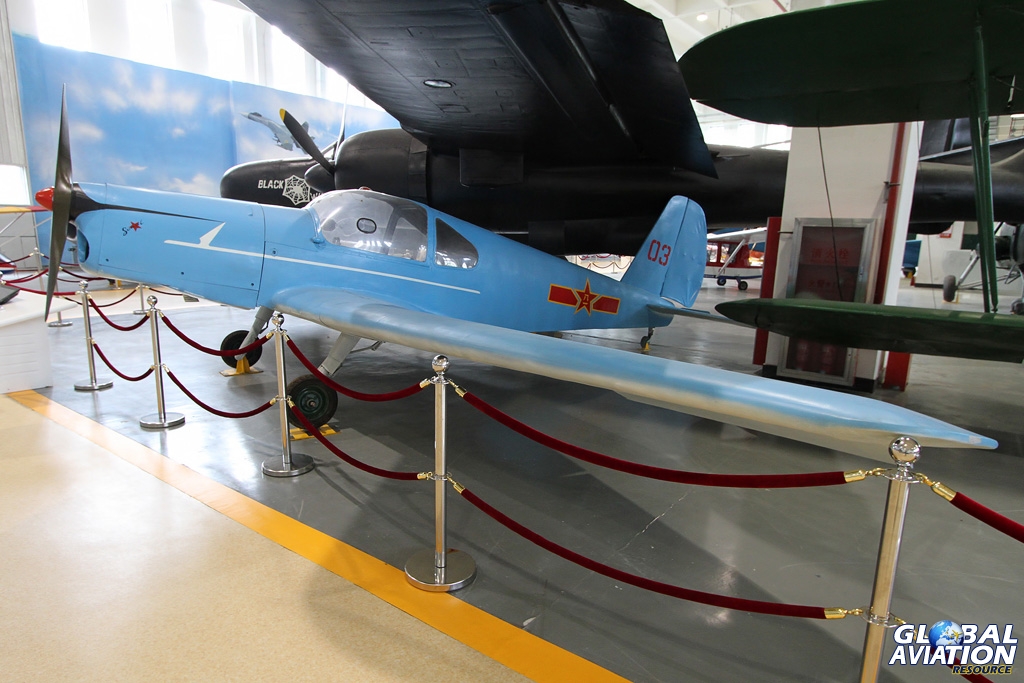
© Karl Drage – www.globalaviationresource.com
The Czechoslovakian input did not end there either. I was surprised to see an Aero Ae-45 on display, however, further research shows that the type very definitely was operated by the PLAAF, though no national insignias are carried on the preserved aircraft.

© Karl Drage – www.globalaviationresource.com
And that’s not the only Aero designed aeroplane on display. There’s also an Aero L-60 Brigadyr. The high-wing and general look bears an uncanny resemblance to the Fieseler Storch, so it will come as no surprise that the type has a similar STOL profile and was actually designed to replace that aircraft. The Brigadyr only operated in civilian hands in China.

© Karl Drage – www.globalaviationresource.com
Mikoyan-Gurevich’s MiG-9 “Fargo” was the company’s first jet fighter and flew for the first time in April 1946, entering Soviet military service in 1948. Of the 610 built, at least 372 are reported to have been passed on to the PLAAF, and only three examples are known to remain in the world today, with 86104 being one.

© Karl Drage – www.globalaviationresource.com
Such was the speed of progress at the dawning of the jet age that the MiG-9 was soon replaced by the MiG-15. An incredible 12,000 examples were built in Russia and around 6,000 more are believed to have been manufactured under licence elsewhere. The Beijing Air and Space Museum has examples of both MiG-15 (initial production version) and MiG-15bis (improved single-seat fighter version) on display.

© Karl Drage – www.globalaviationresource.com
The Ilyushin Il-28 “Beagle” was initially conceived as a jet bomber but ultimately went on to perform a wide variety of roles, such as photo reconnaissance, electronic warfare, anti-shipping and anti-submarine, to name just a few. It was produced in substantial numbers at home in the Soviet Union (6,316 aircraft) and a further 319 were built under licence in China as the Harbin H-5. Beijing Air and Space Museum’s aircraft is a H-5 and it is preserved minus its port wing and with much of the exterior paneling removed.
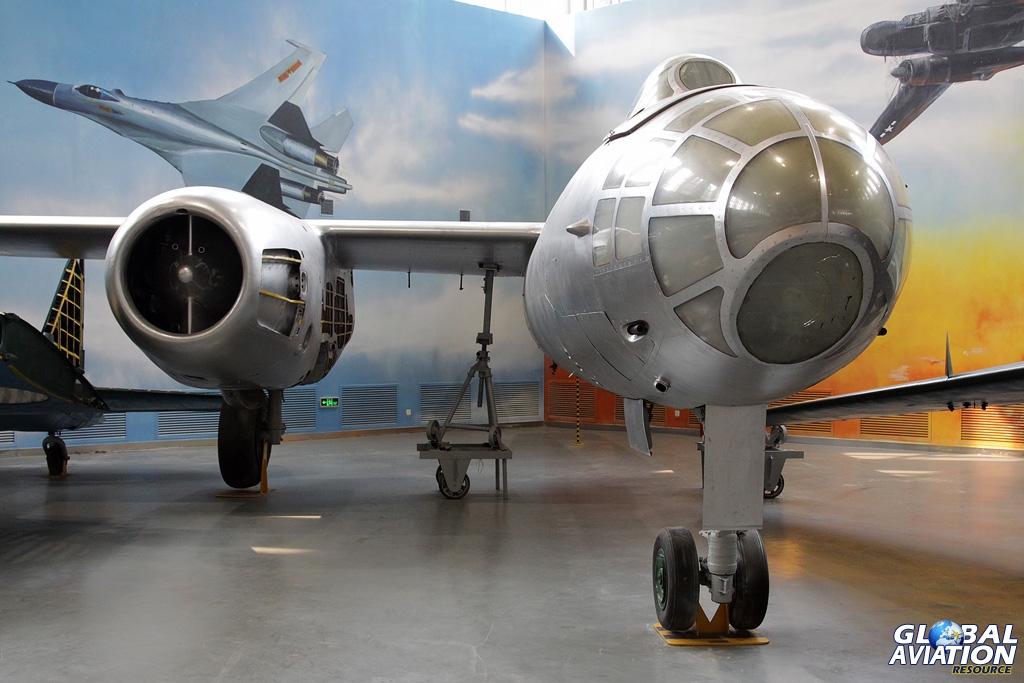
© Karl Drage – www.globalaviationresource.com
By the end of September 1953, Mikoyan-Gurevich had already flown its MiG-19 “Farmer”. Shenyang Aircraft Corporation started licensed production of the type in 1958, calling it the Shenyang J-6. Around 3,000 were built by the Chinese manufacturer with the J-6 (and its export version the F-6) going on to serve 16 nations. The museum’s example, 50905, is a J-6 III.

© Karl Drage – www.globalaviationresource.com
For me, one of the best looking aircraft in the collection is the Nanchang Q-5 “Fantan”. Developed from the Shenyang J-6, the Q-5 is a ground-attack aircraft which began life in 1958. The project was cancelled after the first prototype was completed but the persistence of one small team was rewarded when production was shifted to Nanchang in 1963, with first flight achieved in June 1965. Many variants were developed, including a nuclear bomber, an anti-shipping model and all manner of other upgraded versions. Around 1,300 examples were manufactured across all variants including those for export. As of December 2013, the type remained active with five nations, with just Pakistan having withdrawn its fleet.
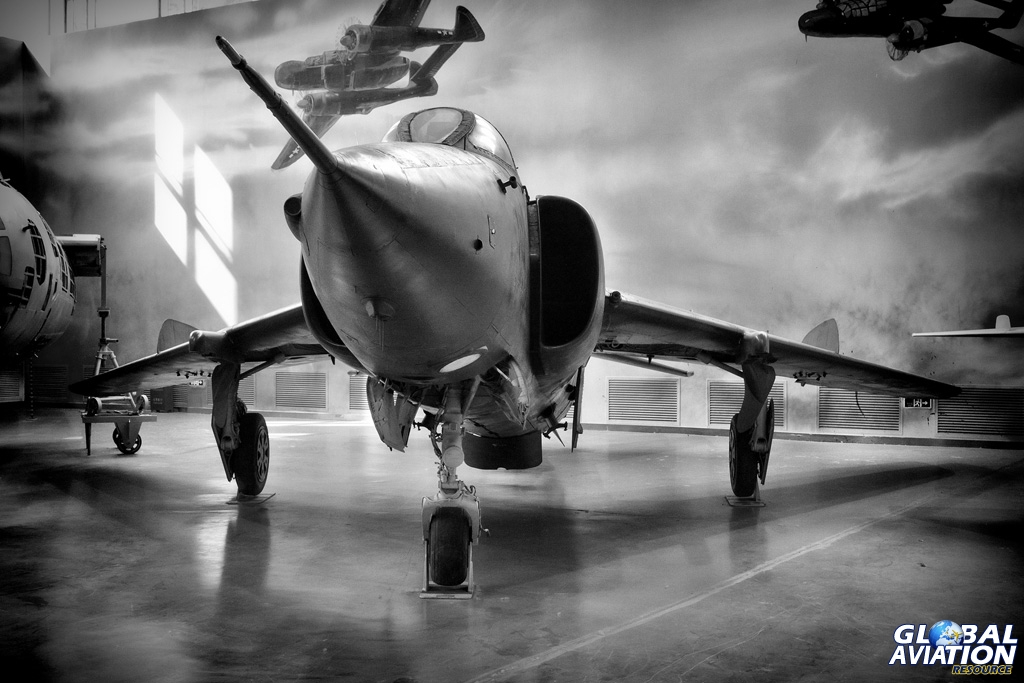
© Karl Drage – www.globalaviationresource.com
A unique airframe on display in the hall is that of the only ever Beijing 1 to be produced. Making its first flight on 24 September 1958, the Beijing 1 was the first passenger airliner to be designed and produced in China. With a crew of two and between eight and ten passengers, the 12.15m long aircraft could fly at a maximum speed of 162 knots. It is not clear why the type failed to enter serial production.
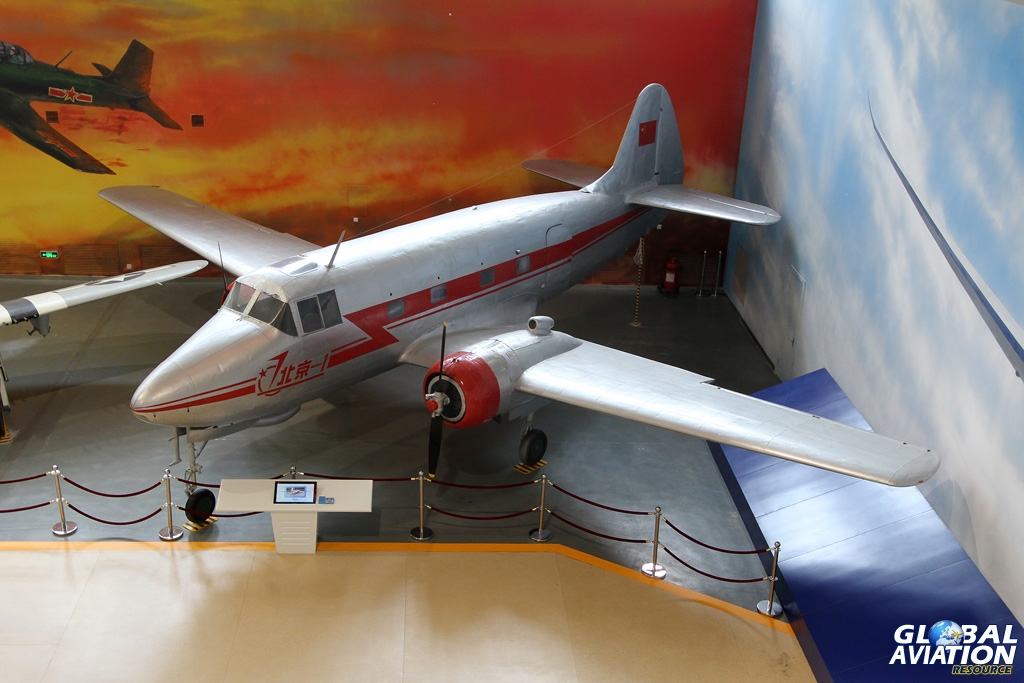
© Karl Drage – www.globalaviationresource.com
Another type indigenous to China to be found on display is the Nanchang CJ-6. Designed as a primary trainer, it is estimated that more than 3,000 examples were produced, mainly for the domestic military. For now, the type remains active in PLAAF service, though it is expected that the Hongdu/Yakovlev CJ-7 will succeed it. The CJ-6 will be a familiar type to most readers with several active on civil registers in the Western Hemisphere.
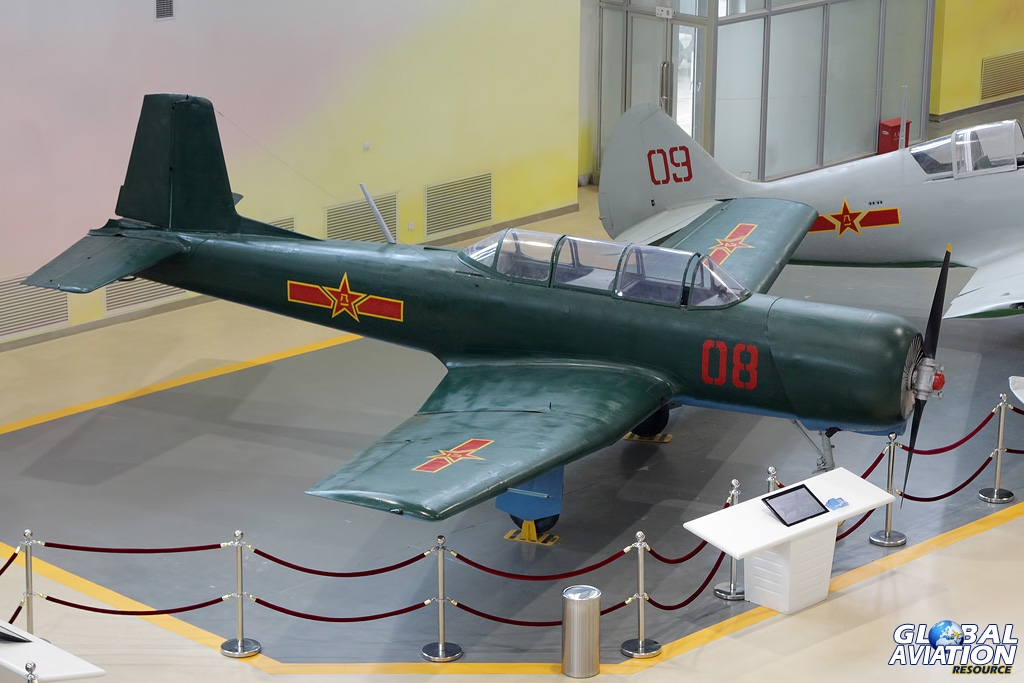
© Karl Drage – www.globalaviationresource.com
I wasn’t quite expecting to find a Hawker Siddeley Harrier GR3 in IV(AC) Sqn colours, either. XZ965 apparently arrived in Beijing in 1996 after an exchange between the university and the late Mark Hanna. Passing in the other direction was a Lavochkin La-9, which is now owned by Jerry Yagen’s Military Aviation Museum, having been restored to airworthy condition (the only one in the world) by Pioneer Aero Restorations in New Zealand.

© Karl Drage – www.globalaviationresource.com
The Chengdu J-7 is a license-built version of the Mikoyan-Gurevich MiG-21F. Although the nation was invited to ‘technology share’ by the Soviet Union, the offer came on the back of the Sino-Soviet split, whereby the USSR had withdrawn its advisers from China. The relationship remained somewhat frosty, and the Chinese found themselves unable to use certain parts that had been supplied and that a number of documents necessary for the aircraft’s manufacture were missing. Consequently, the Chinese set about reverse engineering the aircraft so that they could produce them easily themselves. Over 2,400 (including those exported as the F-7) were manufactured from 1965 with production, incredibly, only concluding in 2013 when the final 12 examples were delivered to the Bangladeshi Air Force.
The museum’s aircraft, 86102, is said to be one of the prototypes.

© Karl Drage – www.globalaviationresource.com
The Shenyang J-8 “Finback” flew as far back as July 1969 but China’s Cultural Revolution meant that the type did not formally enter production until 1979, with service entry coming the following year. It had been conceived to combat the threat posed by B-58 Hustlers, F-105 Thunderchiefs and the U-2, something which the J-7 had been deemed incapable of doing. The delayed introduction meant that when it did arrive, it was only really comparable with older Soviet types. Despite an updated avionics package which gave the aircraft an all-weather capability, the J-8I (Finback-A) remained unimpressive. The last of the J-8I variants was retired in 2012, and the museum’s example – 30059 – is a J-8E, with improved electronic warfare systems, previously operated by Division 24.
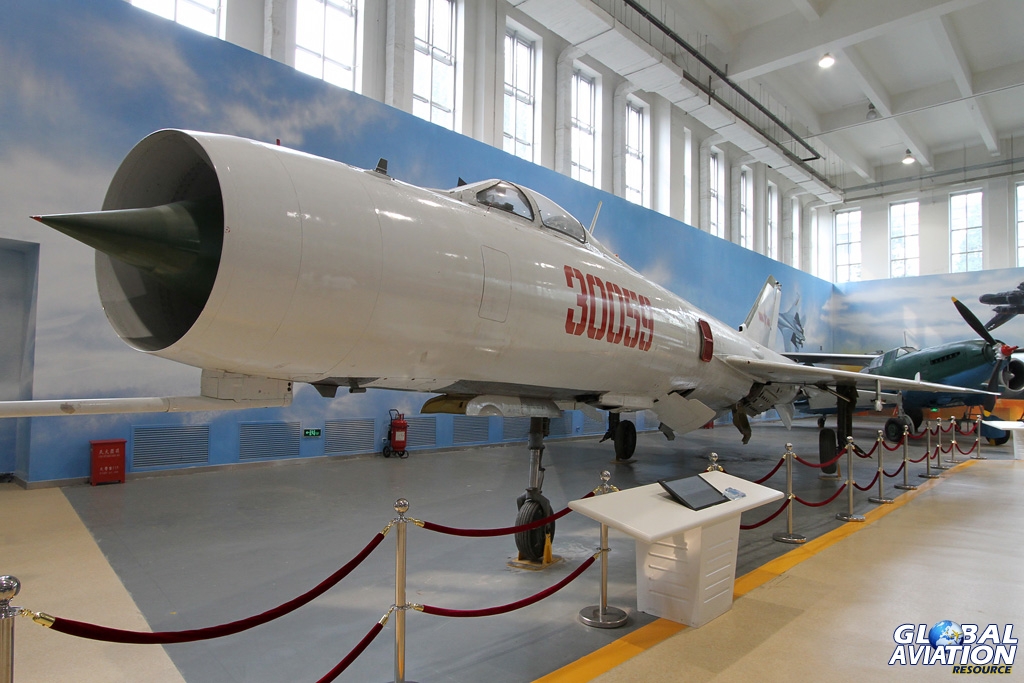
© Karl Drage – www.globalaviationresource.com
Its replacement, the J-8II is quite a different looking beast with a new fuselage, intakes and nose. The differences are not just external, and the aircraft benefits from a new radar, engine and cockpit, with the latter incorporating a HUD, INS/GPS and TACAN technologies. Some 390 J-8s of all models were produced for both the PLAAF and the People’s Liberation Army Navy Air Force (PLANAF). The type will be gradually withdrawn as Chengdu J-10s and J-11s are delivered. The J-8II in the collection is not actually a real aircraft. It’s a full-scale model and sports a striking blue/light grey camouflage scheme and is the most modern fighter aircraft design on display.

© Karl Drage – www.globalaviationresource.com
There are further ultra and microlight types to be found dotted around the building, both at ground level and hanging from the ceiling. Disappointingly trapped on the floor in the middle of the main centre section and completely inaccessible is a Harbin Z-5 helicopter, the Chinese-built version of the Mil Mi-4. Some 545 were produced and were used in a variety of roles including transport, VIP transport, SAR and some were even kitted out as assault helicopters and others for agricultural and forestry protection missions.
Despite the frustrations about the lack of space at ground level, the fact that many of the exhibits can be viewed from above does go a long way towards making up for that. The upper floor also includes a substantial collection of aircraft models hung from the ceiling, and there are displays on rockets, satellites and other Chinese space related technologies as well as a number of items capable of being carried by an aircraft, such as missiles and external fuel tanks.

© Karl Drage – www.globalaviationresource.com
Back down stairs and completing the tour are exhibitions of aircraft engines and, bringing things right up to date, small scale UAVs.
The Beijing Air and Space Museum might be tiny when compared to the immense China Aviation Museum collection at Datangshan, but it still ranks very highly in terms of quality and is well worth a visit if you find yourself in Beijing.


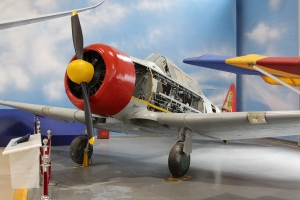
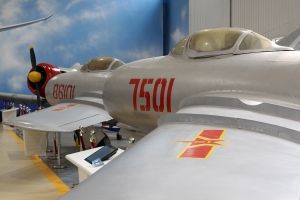
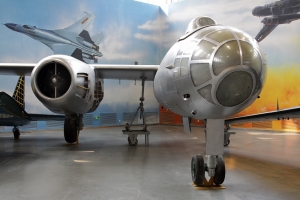

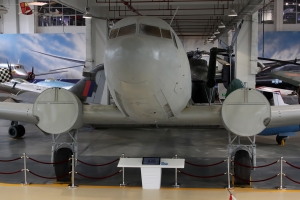

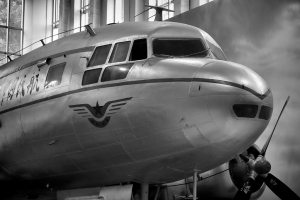

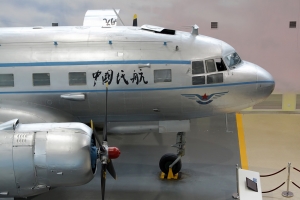
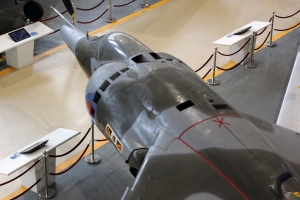









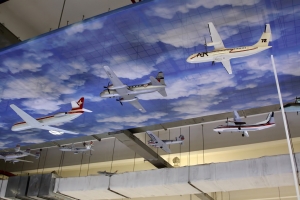

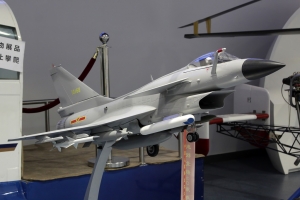



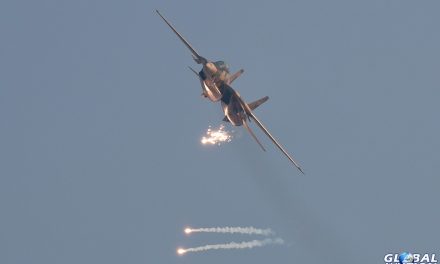
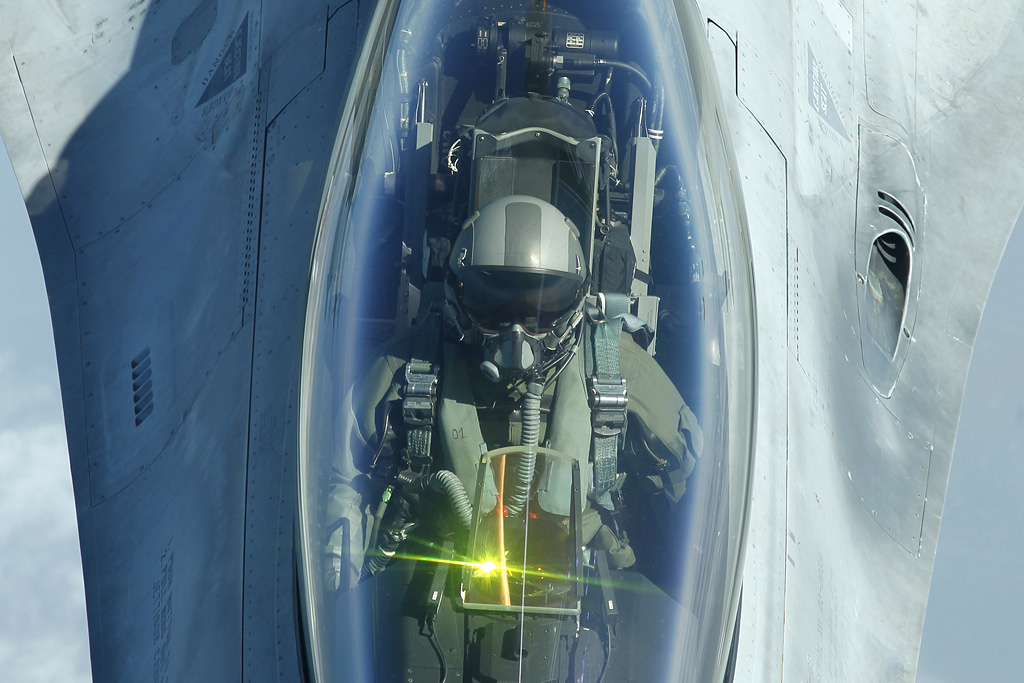
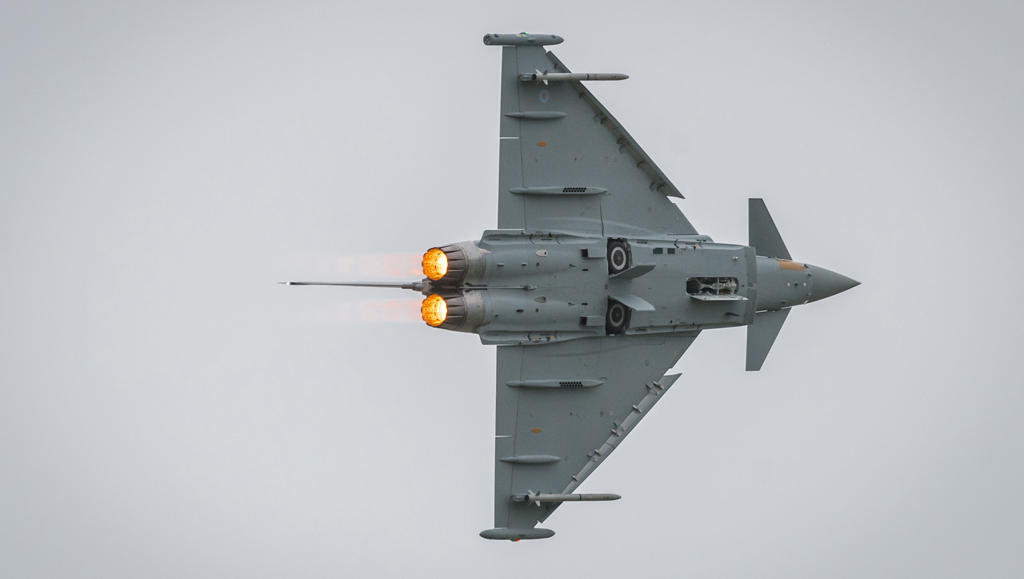

Good afternoon Karl, A very interesting set of photographs and information. I went to the museum in September 2015 and enjoyed the whole experience.
However when I came to collate my photographic records, I had one bit of information missing, so I wonder if you could help?
Have you any idea what this aircraft is? My photo link is at: https://www.flickr.com/photos/jlt_egcc74/21826450189/in/album-72157657252268413/ I don’t think it is a Mifeng-2, as there is one hanging from the museum rafters. That photograph is at: https://www.flickr.com/photos/jlt_egcc74/21826126220/in/album-72157657252268413/
Any help would be appreciated. Kind regards John
Hi John,
Thanks for your message.
I’ve just had a look through all of the resources I used while putting this together, and I’m afraid I’ve drawn a blank. Sorry!
Hope someone is able to assist.
Kind regards,
Karl
Good afternoon Karl, Thank you for your investigations and your reply. I will continue to look for this mystery machine. However two friends are visiting this museum in October and maybe it will have an information plate on the exhibit by that time. Many thanks again. John
I was in Beijing in May of 2011, and I stayed in the Vision Hotel near the University. Outside my hotel window was a great view of a parking lot, in which was stored many of the aircraft now in the museum, but prior to their restoration. You can view a photo of this unusual sight here: http://squirrelismyfriend.deviantart.com/art/Military-Aircraft-Graveyard-in-Beijing-China-544855524
This was really well presented and well written – thank you. I only wish I spotted this BEFORE I went Dec/14 as I had similar difficulties getting in 😉
Wow nice museum and great report.
I wil visit Beijing within two weeks, can you help me with the opening times of this great museum.
Hans
Hi Hans,
I’m afraid I can’t. I suspect weekdays between 1000-1600 would offer the greatest chance of success, but that is only a guess.
We also visited the China People’s Revolution Military Museum (currently the building is under restoration and the vast majority of exhibits are outside – and not particularly well positioned for photography) and the China Civil Aviation Museum this week. Both are free entry on production of some valid ID (passport, driving licence etc).
Sorry I’m not able to help more with your specific request.
Karl